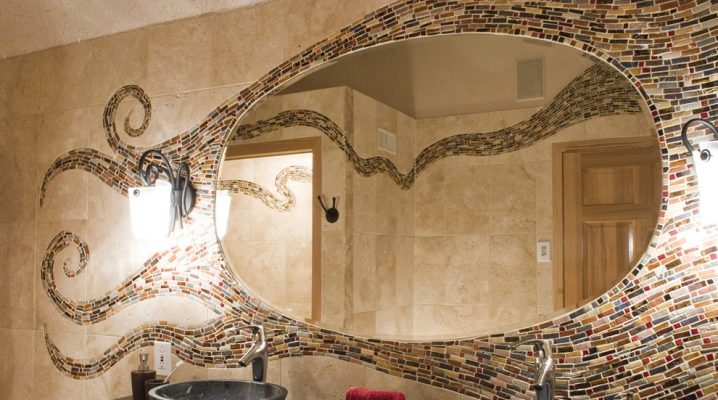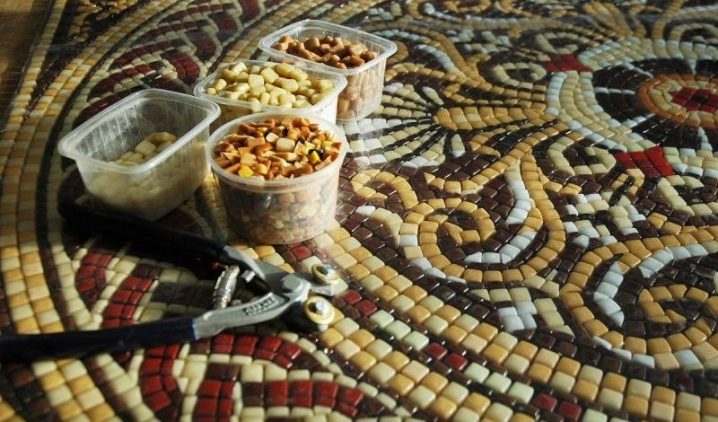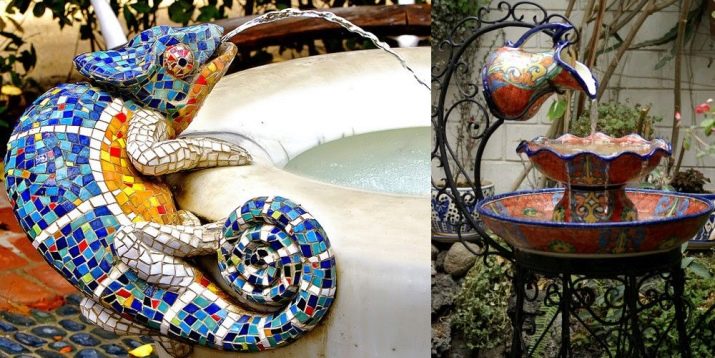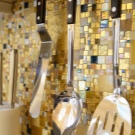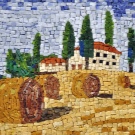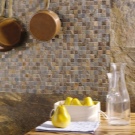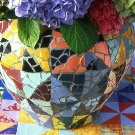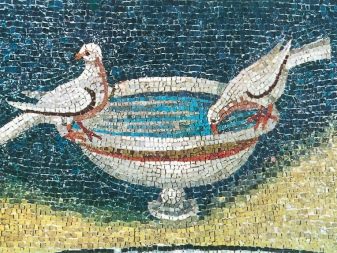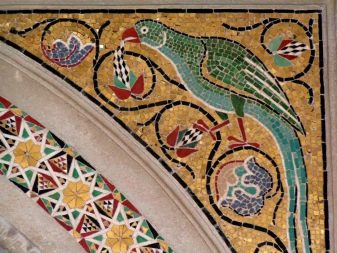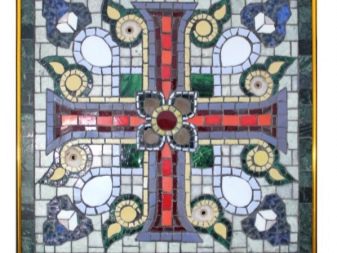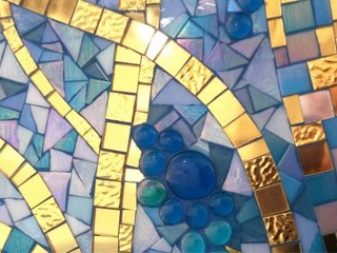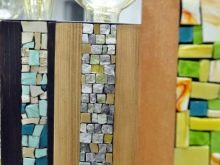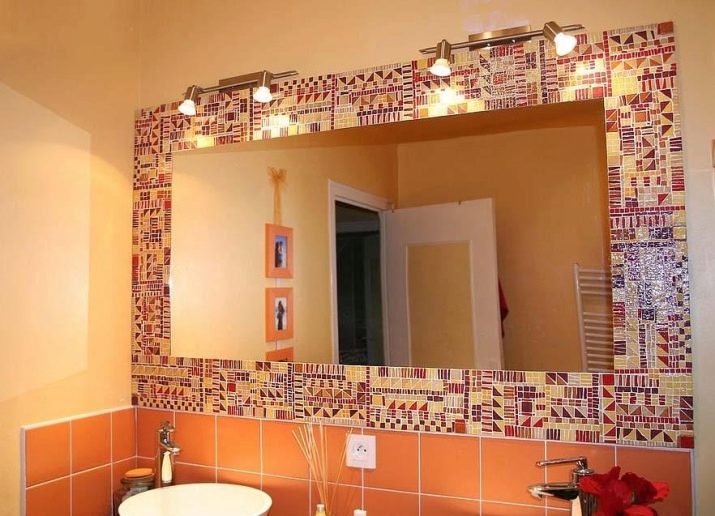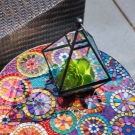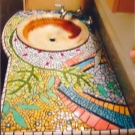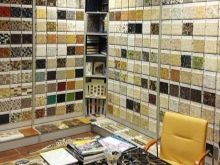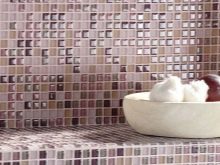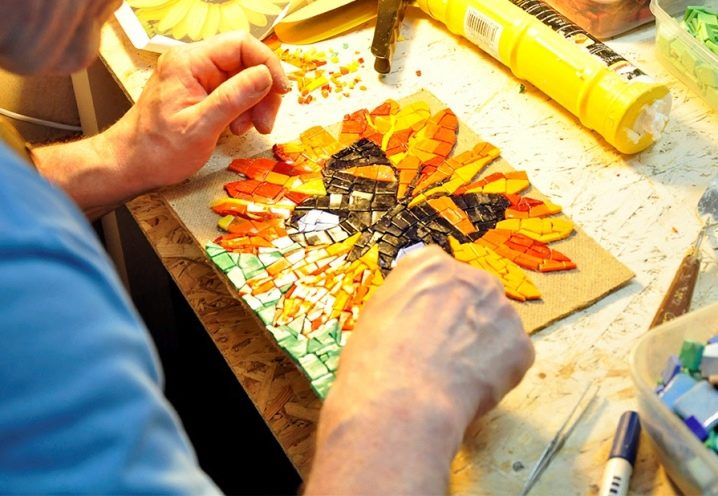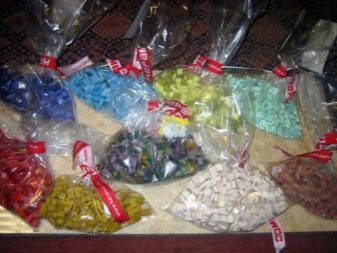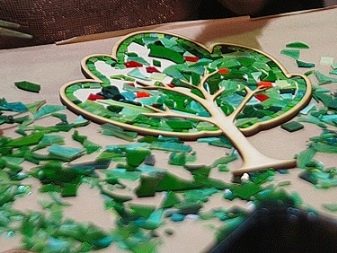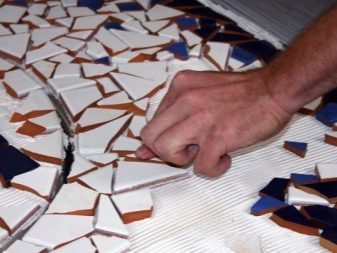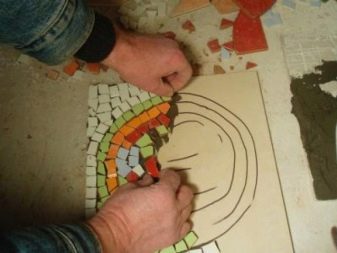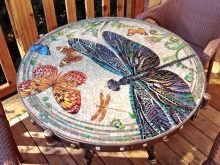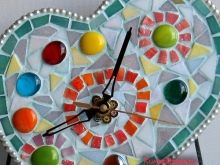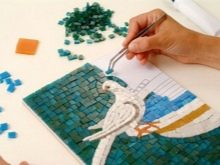Smalt mosaic: application in interior design
Smalt is the most ancient material obtained by melting glass with the addition of various metals: gold, silver, copper. By crushing the master get a plate of square or rectangular shape, which have a wide range of colors and a variety of textures.
The smalt mosaic is found in the Ancient cultures of Greece, the Roman Empire, Byzantium, and even in ancient Russian temples.preserving to this day incredible objects of art, characterized by extraordinary shine, overflow of shades, a combination of glossy and matte elements.
Merits
Modern designers boldly use mosaic technology in interior design. Among the advantages of this decoration option, there are several.
- the richest spectrum of colors - bright and dark, saturated and transparent, which do not fade under any circumstances;
- durability, which is testified by the frescoes of ancient temples that have survived to the present day;
- wear resistance: smalt is not susceptible to corrosion, rotting, abrasion, thinning, which allows it to be used in the design of walls and the floor, and this material can withstand a high degree of load (due to this property, smalt mosaic is used in the interior of public places);
- waterproof material properties allow the use of mosaics in the hamam, pools, saunas and bathrooms;
- smalt is absolutely independent of temperature. These are two of its most important advantages - heat resistance, thanks to which modern designers design the smallest walls of fireplaces and stoves, as well as frost resistance, which allows using the material when facing facades and landscaping objects.
Mosaic types
Modern art critics distinguish several types of small mosaic.The basis for the classification are the peculiarities of the tesserov display - glass pieces. There are several varieties of such finishes.
Byzantine
Byzantine mosaic is the traditional and most ancient type, in which fragments are selected of approximately the same geometric shapes and sizes. The pieces of smalt are placed as close as possible to each other, and the gaps are filled with a special grout.
Florentine
Florentine mosaic on the technique of laying is not much different from the previous type, but the finished canvases are a complete story. Tessera here can be of different shapes and sizes.
Inlay
This view involves laying mosaic on the canvas, which differs in material and texture (for example, the insert of smalt into a tree).
Marquetry
Marquetry is a modern look of small mosaic on glass or metal. As an example - the decoration of interior items (a glass table with a mosaic on the tabletop, decorating the front door).
Application
Due to its durability, mosaic painting can be applied in various fields. Unlike a fresco or stone mosaic, smalt does not crumble, does not fade, and therefore does not require special care, restoration, protection.That is why the smalt mosaic is used in their interiors by real connoisseurs of art.
Smalt can be used when facing a variety of forms. These can be walls, floors, pillars, domes, doors, stairs, facades. The smalt mosaic acts as a separate work of art (picture), and in combination with other decorative elements, ornamental decorations, indoors and outdoors, in the cold and heat, even under water - this is the uniqueness of such decoration.
If you have conceived to apply a mosaic of smalt in the interior design of your apartment or public institution, it is better to contact a professional.
In the case when rooms with a high concentration of moisture (baths, saunas, bathrooms) are to be decorated, waterproofing is required. Nowadays it is rarely possible to meet a master who lays the mosaic manually, as there are ready-made canvases, with the use of which you only need to transfer the pattern to the surface to be decorated. Often the smalt is produced in the form of blocks on the basis of paper or fabric.
Skilled handlers will independently perform all work on surface preparation and application.mosaics, pick up adhesive material, grout and make laying, observing the norms of temperature and humidity. But if you are lucky enough to hire a professional mosaicist artist, be prepared to pay a considerable sum for his work.
How to lay out with your own hands?
If you want to design the interior yourself, you need to acquire certain skills. On the Internet, it is difficult to find a detailed master class on decorating in mosaic technique of smalt. This work is extremely laborious and time consuming and requires a certain degree of skill. If, nevertheless, you decide to try to decorate any part of your interior in this style, we have developed a small instruction with tips for you.
To decorate the mosaic, we need pieces of broken glass of different geometric shapes. Paint it yourself at home is unlikely to succeed - the real smalt is cooked in ovens at high temperature with the addition of various coloring pigments. It is more convenient to use the finished material in the form of a sheet plate.
We offer you to carefully read the instructions.
- Prepare a working area on a flat horizontal surface, excluding the ingress of glass fragments on pieces of furniture, corners. Restrict the access of children and pets in the work area. Cover the work surface with protective material (thick film, newspaper). Use gloves and construction glasses.
- The correct splitting is very important. Place a wooden stump (cleaver) or a metal cylinder in the center. Place a smalt blank on it and clamp it with a chisel. Apply not too sweeping blows with a hammer (glass chips quickly fly apart).
- Having done a certain amount of work, sort the fragments into containers according to their color, geometric shape and size.
Do not rush to discard elements with jagged edges - they can also be useful for the design of your canvas.
- When the splitting is finished, thoroughly clean the work surface - replace the protective material, vacuum it, do wet cleaning, change gloves.
- Prepare a canvas or other object for laying smalt. The base for applying the mosaic should be strong, dry and not crumbly.Its surface should be perfectly clean and carefully leveled - particles of dust and other debris, irregularities and pores can contribute to the breaking away of pieces of smalt in the future.
- Getting to the most interesting - laying mosaic. Modern masters use 2 methods of calculation: direct and reverse. In the first embodiment, pieces of glass are applied to the adhesive base (or mastic) face up, slightly pressing down. In this case, you always see the result.
- When using the inverse method, the smalt cubes are laid down face down, and then poured with adhesive or the glue is applied to the material (fabric, cardboard, film, mesh), which cover the laid out mosaic. After solidification, the canvas is turned over and then edited by the tessera alignment. This method is more difficult, however, allows you to make the most flat canvas and collect large parts of the panel in a short time.
Begin to lay out a mosaic of large pieces of a rectangular shape, forming the edges of the future picture from parallel rows. It is quite simple and does not take much time, allowing for further installation to determine the right direction of work.
Thus, we got acquainted with the technique of laying a mosaic of smalt. Laying of small crumb is a creative work and requires certain skills, special color perception, perseverance and development of fine motor skills. Remember that such a panel can be used in a variety of styles: from classics to avant-garde, as well as in futurism expositions and design of oriental interiors. The game of form and color will not leave anyone indifferent.
To learn how to cut a mosaic of smalt diagonally and glue correctly, see the following video.
